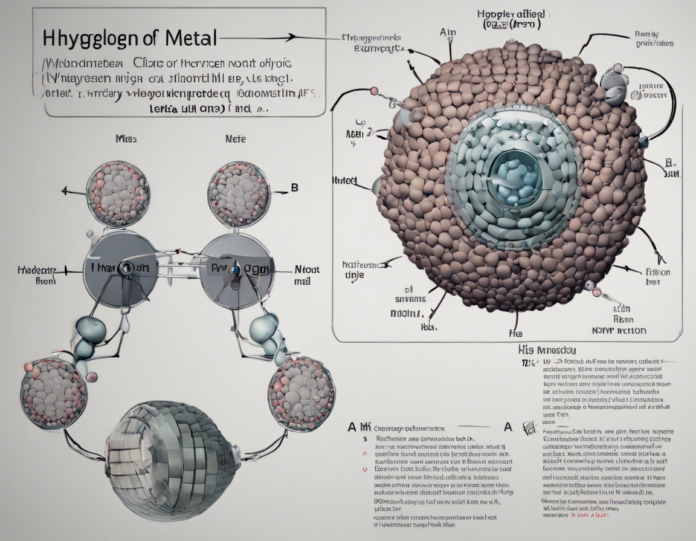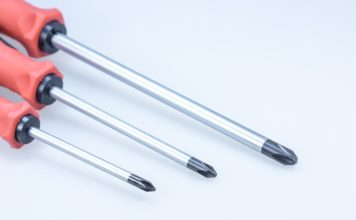Hydrogen is a chemical element with the symbol H and atomic number 1. It is the lightest and most abundant element in the universe, making up about 75% of its elemental mass. Due to its unique properties, hydrogen is sometimes a topic of confusion when it comes to its classification as a metal or nonmetal. Let’s delve deeper into this question and explore the nature of hydrogen to determine whether it is a metal or a nonmetal.
1. What is a metal?
Metals are elements that are typically shiny, malleable, ductile, good conductors of heat and electricity, and often have high melting points. They are found on the left side of the periodic table and include elements like iron, copper, and gold.
2. What is a nonmetal?
Nonmetals, on the other hand, are elements that are typically dull, brittle when solid, poor conductors of heat and electricity, and often have low melting points. They are found on the right side of the periodic table and include elements like carbon, oxygen, and nitrogen.
3. Characteristics of hydrogen
– Atomic Structure: Hydrogen consists of one proton and one electron in its atomic structure, making it the simplest element on the periodic table.
– Physical Properties: At room temperature and pressure, hydrogen exists as a diatomic gas (H2). It is colorless, odorless, tasteless, and highly flammable.
– Chemical Properties: Hydrogen is highly reactive and can form compounds with most other elements on the periodic table. It can act as a reducing agent or an oxidizing agent depending on the reaction.
Is Hydrogen a Metal or Nonmetal?
Hydrogen is unique because it does not fit neatly into either the metal or nonmetal category. It exhibits properties of both, blurring the lines between the two classifications. Here’s why:
Metal-like properties of Hydrogen:
– Conductivity: While molecular hydrogen (H2) is a poor conductor of electricity, metallic hydrogen (created under extreme pressure) is predicted to be a superconductor at room temperature.
– Reactivity: Like metals, hydrogen can lose its single electron to form the positively charged ion, H+, similar to the behavior of alkali metals.
– Metallic Hydrogen: Under extreme pressure, hydrogen can exhibit metallic properties, such as being reflective and conducting electricity.
Nonmetal-like properties of Hydrogen:
– Gaseous State: In its most common form (H2), hydrogen is a gas at room temperature, which is a characteristic of nonmetals.
– Electronegativity: Hydrogen is atypical for a metal, as it has a high electronegativity comparable to nonmetals like oxygen and fluorine.
– Hydrides: Hydrogen readily forms compounds with nonmetals to create hydrides, exhibiting nonmetallic behavior.
Frequently Asked Questions (FAQs)
Q1: Can hydrogen be classified as a metalloid?
A1: Hydrogen is not a metalloid. Metalloids have properties that are intermediate between metals and nonmetals, whereas hydrogen exhibits characteristics of both but does not strictly align with the definition of a metalloid.
Q2: Can hydrogen be found in a liquid or solid state?
A2: Hydrogen can exist as a liquid or solid at very low temperatures. In its liquid state, hydrogen is used in applications such as rocket fuel, and in its solid state, known as metallic hydrogen, it is predicted to have properties similar to a metal.
Q3: Is metallic hydrogen naturally occurring?
A3: Metallic hydrogen is not naturally occurring on Earth due to the extreme pressure required to produce it. It is theorized to exist in the cores of gas giant planets like Jupiter and Saturn.
Q4: What are the main uses of hydrogen?
A4: Hydrogen is used in various industries, including in the production of ammonia for fertilizers, in petroleum refining, as a fuel for vehicles (fuel cells), and in the aerospace industry for rocket propulsion.
Q5: Is hydrogen safe to use as a fuel?
A5: Hydrogen is a clean fuel that produces water vapor as a byproduct when used in fuel cells. However, precautions must be taken due to its flammability and the need for proper storage and handling procedures.
In conclusion, hydrogen defies a straightforward classification as a metal or nonmetal due to its unique properties that exhibit characteristics of both categories. Its diverse behavior, which can range from diatomic gas to metallic hydrogen under extreme conditions, makes it a fascinating element to study and utilize across various scientific and industrial applications.









